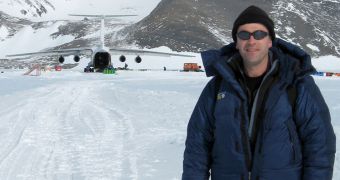A team of British researchers, including experts from the University of Bristol, is currently about to embark on an Antarctic expedition that has been 16 years in the making. The scientific study will be one of the most ambitious ever conducted at the South Pole.
Scientists, engineers and support personnel (a total of 12 participants) will travel to Antarctica next month, in order to collect water and sediment samples from a lake. The unusual part about this is that the latter is buried under no less than three kilometers (1.8 miles) of ice.
UB professor Martin Siegert is the leader of the team, which is about to embark on a 16,000-kilometer (9,941-mile) journey in a few weeks. Their ultimate destination is the subglacial Lake Ellsworth, which is located under the West Antarctic Ice Sheet (WAIS).
By analyzing this habitat, which has remained isolated from the real world for millions of years, it may be possible to gain a deeper understanding of what Earth's climate looked like in ancient times, as well as of the organisms that lived at that time.
Knowing how resilient life can be, scientists expect to find at least some bacteria and microbes still alive in the subglacial lake. They have already prepared special procedures for sampling the lake without introducing any contaminants within its ecosystem.
The actual harvesting will be done by a state-of-the-art titanium water-sampling probe, working alongside a bespoke sediment corer. Both of these devices were carefully designed and constructed by the British Antarctic Survey (BAS) and the National Oceanography Center (NOC).
“For the first time we are standing at the threshold of making new discoveries about a part of our planet that has never been explored in this way,” explains Siegert, also the principal investigator on the study.
“Finding life in a lake that could have been isolated for up to half a million years is an exciting prospect, and the lake-bed sediments have the potential to paint a picture of the history of the West Antarctic Ice Sheet in a way that we haven’t seen before,” he adds.
“The team’s mission is to get into the deep field and bring back clean, valid samples of lake water and lake-bed sediments, which can be brought back to the UK for in depth analysis,” the expert says.
After the surface of the lake is breached, experts will have just 24 hours to collect samples, before low temperatures and speedy winds re-freeze the hole, sealing the lake once more.

 14 DAY TRIAL //
14 DAY TRIAL //